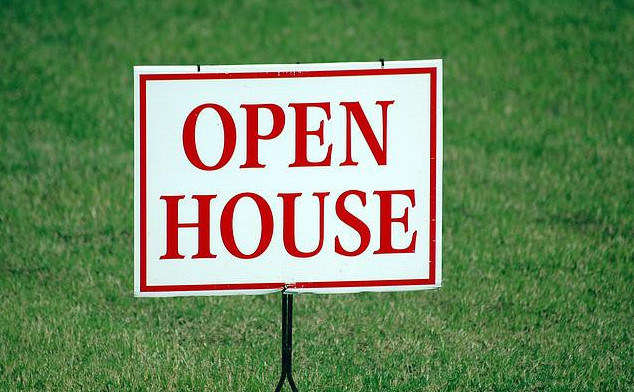FAQ
Real Estate is an occupation that for some comes very easy. Others find it very difficult to understand. Wherever you may fall between these two extremes lies various terms that need to be understood. Any livable space is defined as real estate. Buying or selling any livable space can bring wealth or disaster, which is why these real estate terms should be learned.
Sooner or later most people will be buying a property to live in. Some people will invest money into a property to earn money from the proceeds the property earns, while others will inherit a property to dispose of. Knowing what to do and how to do it is what this website is all about. Below you will find some Frequently Asked Questions with answers to help you learn the terminology as well as definitions.

FAQ
What Is Buying Property As “Subject To”?
Buying a “Subject To” property is when the seller signs over the Deed to their property to the buyer, and walks away. The property remains in the seller’s name but the property belongs to the buyer. No money is due to the seller. This relieves the seller of the debt, so consequently, they receive debt relief, and many times this will save their credit. According to https://royallegalsolutions.com/subject-to-mortgage, they define Subject-To” as a way of purchasing real estate where the real estate investor takes title to the property but the existing loan stays in the name of the seller. In other words, their interest is “subject to” the existing financing. The investor now controls the property and makes the mortgage payments on the seller’s existing mortgage..
The disadvantages of this type of mortgage for the seller are,
- May not qualify for another loan because there is no proof of income to offset the debt that stays on the seller’s credit report
- Has no way to take the house back if the buyer doesn’t pay the mortgage.
The seller that sells their property as a “subject to”, many times are in a situation where they must relinquish ownership because of job loss, relocation, illness, etc. As a last resort, a “subject to” seems the only way out of a very bad situation. However, a “wrap”, used by savvy investors, is a much better alternative that accomplishes the same thing but also protects the seller. See the definition below.
What is Buying Property with a “Wrap Around Mortgage”?
A “wrap-around mortgage” also known as a “wrap”, is a new mortgage that is created by a real estate attorney that wraps around the existing mortgage of a property. This allows a buyer to buy the property with no money down, as in owner financing. This is a much better choice for the seller because,
- There is a recorded note showing the same income to the seller is obligated to pay on their loan. Therefore, most lenders will allow that income to wash out the debt and eliminate the debt-to-income ratio problem. This is not guaranteed but generally, most lenders will accept it.
- The seller has a debt instrument so they can foreclose on the buyer if the buyer doesn’t pay the mortgage.
What is a “Lease Option”?
A “lease option” is when the buyer is going to lease the property from the seller with the option to buy. The payment that the buyer is giving the seller is “rent” and usually doesn’t get credited toward buying the property. There is a set period of time that the buyer has to exercise their option to get a new mortgage to buy the property. The advantages and disadvantages of this arrangement for the buyer are as follows:
Advantage Disadvantage
- No closing cost 1. Don’t own
- Easy exit 2. Semi Control
- No recording at the county courthouse 3. No Depreciation
What is “Owner Financing?”
Owner financing is when the owner of a property is allowing the buyer to finance buying of the property through the owner. The owner basically becomes the bank and accepts payments from the buyer to buy the property. Below are some of the advantages and disadvantages of owner financing,
Advantage Disadvantage
- The buyer owns property 1. The buyer pays closing costs
- The buyer has total control 2. Hard to give the property back
- The buyer gets to claim depreciation 3. Recording required
Another benefit the seller receives is in most cases, they will make more money because the buyer will pay the closing costs. If the property is an FSBO, that is, For Sale By Owner, the seller also saves money by not paying any realtor commissions. The seller also benefits from no inspections, no repairs, no hassles with bank qualifications, and quick closing. Many times the seller will pay fewer capital gains taxes because they are not receiving a big lump sum of cash.
Is Owner Financing Legal?
This is a very good question. Most people don’t know that this form of financing real estate property is legal. Of course, most people would rather sell their property in the old “traditional” form of using real estate agents that sell properties. They are conditioned to accept the 6% commissions a realtor charges to sell their property as a cost of doing business.
There is, however, a written clause in every mortgage agreement that the seller must be made aware of. The “Due On Sell” clause. This clause states that if the original owner, “on the title”, ever sells the mortgaged property without approval by the bank that the full amount of the mortgage debt will be due immediately.
The banks and lending institutions do have the authority to exercise this right. However, less than 1% of all mortgages fall victim to this condition, as long as,
- The banks are not warned of this condition ahead of time
- Payments are received on time
- The seller of the property tells the bank to start accepting payments via the property management firm, alias the buyer or investor.
What is a “Tenant Buyer”?
A “tenant Buyer” is a buyer that leases the property from the seller, buyer, or investor. The tenant-buyer pays rent to the seller or the buyer for a period of time until the tenant-buyer must exercise their option of applying for a new mortgage to buy property from the buyer, or investor. If the tenant-buyer moves or stops paying for the property they forfeit any previous payments or deposits.
In most cases, the tenant-buyer is a buyer that can’t qualify for a bank mortgage because of credit report issues. Statistics show that out of all the people who desire to be homeowners, only 22% actually qualify for a mortgage. This leaves 70% or more families that want a home of their own but can’t qualify. In most cases it is not a money issue, it is just a glitch or two on the family’s credit report. These families are prime candidates for becoming tenant buyers. They have employment, sufficient income, and a desire to be homeowners.
What is “Creative Financing”?
“Creative Financing” is another term for owner financing. The owner of the property is willing to accept payments in lieu of an all-cash sale. Many circumstances permit this form of financing beneficial to not only the seller but also the buyer. Also, see the Post “What is Creative Financing”.
What is a “Term”?
A “term” is the period of time that the seller and buyer agree to for making payments for the property until the final balloon payment becomes due for the buyer to pay the seller in full. There are many various ways
What is a “Cap Rate”?
Cap Rate is an abbreviation for the capitalization rate. This is the return on investment on a percentage basis if you paid all cash. The formula for Cap Rate is NOI divided by the purchase price. The Cap Rate is the equalizer and will tell you how good a property performs.
What does the term “Acts” mean?
Acts is an acronym for “Assign Contract to Tenant”, which is the process of getting a contract between the Seller and a Tenant Buyer to lease the property for a period of time. The investor that creates the contract with the seller as a lease option to buy, will have the option to sub-lease the property to a tenant-buyer that the seller approves of. The investor now has options. The investor may assign this contract back to the seller, stay in the deal as in a “sandwich lease”, or assign (sell) the contract to another investor.
What is a PML?
A PML means Private Money Lender– which is an entity that furnishes money to the real estate investor for investing in real estate properties as an investment. In other words, this entity loans money to an investor to earn interest on the money that is loaned. The money is secured by the property that is bought by the investor. This type of investment is by invitation only. Many PML people use their retirement accounts to invest in these properties because they can earn up to eight percent. Banks pay less than one percent interest on the Certificates of Deposit and real estate loans are much safer than the very volatile stock market. The earnings on the money borrowed stay invested until the property are sold. This gives the maximum amount of interest the PML can earn. Their interest can be either paid per month or usually everything, principal and interest, all paid at the same time.
What is an HML?
An HML is a hard money lender which happens to be a broker of many PML investors. A hard Money Lender charges a much higher percentage for the privilege of borrowing money from them. They also have many fees associated with their money, like origination fees, points, extension fees, etc. There is a limit to how much you may borrow, and these brokers never invest a full 100% of the costs, only up to 80% of the buy costs and sometimes 100% percent of the rehab expense.




